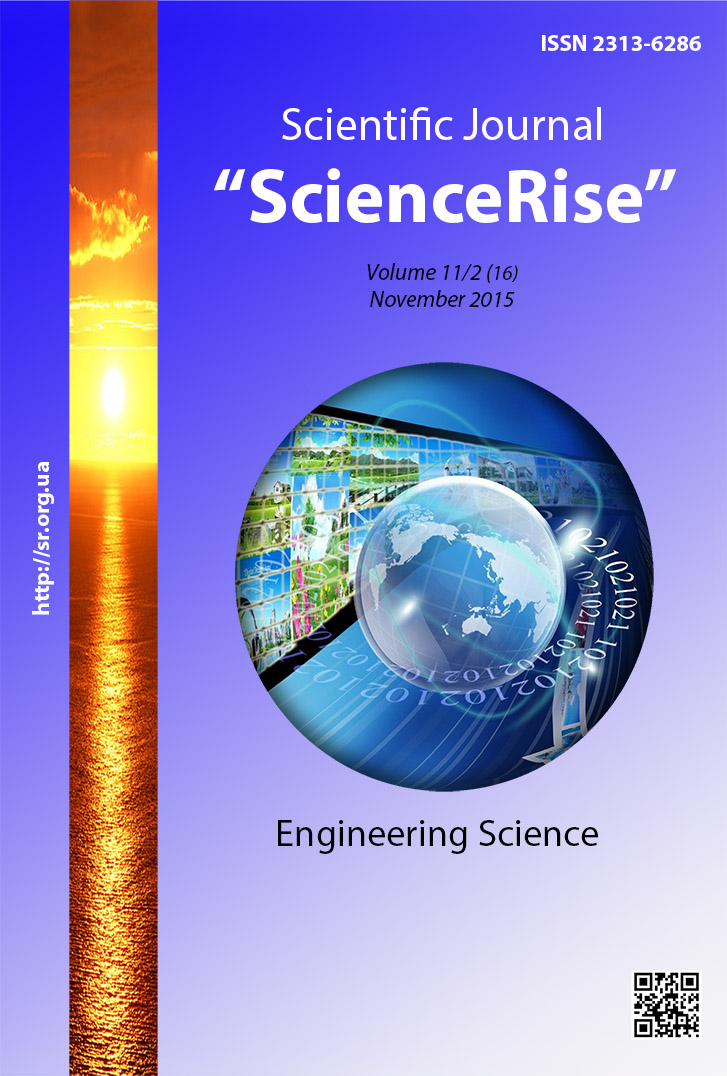Наноэлектроника «снизу – вверх»: термодинамика проводника с током, информационно-управляемый аккумулятор и квантовая энтропия
DOI:
https://doi.org/10.15587/2313-8416.2015.53495Słowa kluczowe:
нанофизика, наноэлектроника, термодинамика резистора, информационная емкость, принцип Ландауэра, квантовая энтропияAbstrakt
В концепции «снизу – вверх» наноэлектроники строится равновесная термодинамика проводника с током, обсуждается накопление информации в неравновесном состоянии и анализируется модель информационно-управляемого аккумулятора и связь ее с принципом Ландауэра о минимальной энергии, необходимой для стирания одного бита информации. Вводится понятие квантовой энтропии, подчеркивается актуальность интегрирования спинтроники и магнетроники в связи с предстоящим переходом к спиновой архитектуре вычислительных устройств
Bibliografia
Kruglyak, Yu. A. (2015). Nanoelectronics «bottom – up»: current generation, generalized Ohm’s law, elastic resistors, conductivity modes, thermoelectricity. ScienceRise, 7/2 (12), 76. doi: 10.15587/2313-8416.2015.45700
Krugljak, Ju. O., Striha, M. V. (2014). Uroky nanoelektroniky. Rol' elektrostatyki i kontaktiv v koncepcii' «znyzu – vgoru». Sensor Electronics Microsys, 11 (4), 27–42.
Feynman, R. P (1972). Statistical Mechanics. Benjamin, New York.
Kruglyak, Yu. A. (2015). Transfer of heat by phonons in Landauer – Datta – Lundstrom transport model. ScienceRise, 2/2 (7), 81–93. doi: 10.15587/2313-8416.2015.36332
Fock, V. (1932). Konfigurationsraum und zweite Quantelung. Zeitschrift for Physik, 75 (9-10), 622–647. doi: 10.1007/bf01344458
Kruglyak, Yu. A. (2014). Configuration interaction in the second quantization representation: basics with application up to full CI. ScienceRise, 4/2 (4), 98–115. doi: 10.15587/2313-8416.2014.28948
Kuprievich, V. A., Kruglyak, Y. A., Mozdor, E. V. (1970). Full configuration interaction for the benzyl radical. International Journal of Quantum Chemistry, 4 (1), 73–87. doi: 10.1002/qua.560040107
Kuprievich, V. A., Kruglyak, Yu. A., Mozdor, E. V. (1971). The Configuration Interaction Method in the Second Quantization Representation. Croat. Chem. Acta., 43, 1–13.
Kruglyak, Yu. A., Mozdor, E. V., Kuprievich, V. A. (1971). Study of the Electronic Structure of Radicals by the CI Method. 1. Matrix Elements of the Physical Value Operators. Croat. Chem. Acta., 43, 15–23.
Kruglyak, Y. A., Ukrainsky, I. I. (1970). Study of the electronic structure of alternant radicals by theDODS method. International Journal of Quantum Chemistry, 4 (1), 57–72. doi: 10.1002/qua.560040106
Kruglyak, Y. (2015). Quantum-chemical studies of quasi-one-dimensional electron systems. 1. Polyenes. ScienceRise, 5/2 (10), 69–105. doi: 10.15587/2313-8416.2015.42643
Kruglyak, Yu. A. (2015). Quantum-chemical studies of quasi-one-dimensional electron systems. Part 2. Cumulenes and origin of the forbidden zone. ScienceRise, 6/2 (11), 122–148. doi: 10.15587/2313-8416.2015.44540
Dill, K. A., Bromberg, S. (2010). Molecular Driving Forces: Statistical Thermodynamics in Biology, Chemistry, Physics, and Nanoscience. New York: Garland Science, 778.
Salahuddin, S., Datta, S. (2006). An All Electrical Spin Detector: Sixth IEEE Conference on Nanotechnology. School of Electrical and Computer Engineering, Purdue University, West Lafayette, 2, 834–837. doi: 10.1109/nano.2006.247788
Kruglyak, Yu. A. (2015). The «bottom – up» nanoelectronics: elements of spintronics and magnetronics. ScienceRise, 8/2 (13), 51–68. doi: 10.15587/2313-8416.2015.47792
Shennon, K. (1963). Raboty po teorii informacii i kibernetike. Mocow: Izd-vo IL, 824. Available at: http://www.novsu.ru/file/1086154
Vol'kenshtejn, M. V. (1986). Jentropija i informacija. Moscow: Izd-vo "Nauka", 192.
Landauer, R. (1961). Irreversibility and Heat Generation in the Computing Process. IBM Journal of Research and Development, 5 (3), 183–191. doi: 10.1147/rd.53.0183
Bennett, C. H. (2003). Notes on Landauer's principle. Reversible Computation and Maxwell's Demon. Studies in History and Philosophy of Science Part B: Studies in History and Philosophy of Modern Physics, 34 (3), 501–510. doi: 10.1016/s1355-2198(03)00039-x
Bérut, A., Arakelyan, A., Petrosyan, A., Ciliberto, S., Dillenschneider, R., Lutz, E. (2012). Experimental verification of Landauer’s principle linking information and thermodynamics. Nature, 483 (7388), 187–189. doi: 10.1038/nature10872
Leff, H. S., Rex, A. F. (Eds.) (2002). Maxwell's Demon 2 Entropy, Classical and Quantum Information, Computing. Bristol: Institute of Physics Publishing, 502. doi: 10.1201/9781420033991
Datta, S. (2007). Nanodevices and Maxwell's Demon. Purdue Universtiy, West Lafayette, USA, 18. Available at: http://arxiv.org/ftp/arxiv/papers/0704/0704.1623.pdf
Kruglyak, Yu. A. (2015). Nanoelectronics «bottom – up»: non-equillibrium green’s functions method, model transport problems and quantum interference. ScienceRise, 9/2 (14), 41–72. doi: 10.15587/2313-8416.2015.48827
Krugljak, Ju. O., Striha, M. V. (2014). Uroky nanoelektroniky: Kvantova interferencija i defazirovka v metodi nerivnovazhnyh funkcij Grina. Sensor Electronics Microsys. Tech., 11 (3), 5.
Kruglyak, Yu. A. (2015). «Bottom – up» nanoelectronics: the hall effects, measurement of electrochemical potentials and spin transport in the NEGF model. ScienceRise, 10/2 (15), 35–67. doi: 10.15587/2313-8416.2015.51353
Horodecki, R., Horodecki, P., Horodecki, M., Horodecki, K. (2009). Quantum entanglement. Reviews of Modern Physics, 81 (2), 865–942. doi: 10.1103/revmodphys.81.865
Friedman, J. R., Sarachik, M. P. (2010). Single-Molecule Nanomagnets. Annual Review of Condensed Matter Physics, 1 (1), 109–128. doi: 10.1146/annurev-conmatphys-070909-104053
Molecular Magnetism Web. A gate to molecular magnetism. Available at: http://www.molmag.de/
Fundamentals of Nanoelectronics, Part 2: Quantum Models. nanoHUB-U. Available at: http://nanohub.org/courses/FoN2
PurdueX. Free online courses from Purdue University. Available at: https://www.edx.org/school/purduex
##submission.downloads##
Opublikowane
Numer
Dział
Licencja
Copyright (c) 2015 Юрий Алексеевич Кругляк

Utwór dostępny jest na licencji Creative Commons Uznanie autorstwa 4.0 Międzynarodowe.
Our journal abides by the Creative Commons CC BY copyright rights and permissions for open access journals.
Authors, who are published in this journal, agree to the following conditions:
1. The authors reserve the right to authorship of the work and pass the first publication right of this work to the journal under the terms of a Creative Commons CC BY, which allows others to freely distribute the published research with the obligatory reference to the authors of the original work and the first publication of the work in this journal.
2. The authors have the right to conclude separate supplement agreements that relate to non-exclusive work distribution in the form in which it has been published by the journal (for example, to upload the work to the online storage of the journal or publish it as part of a monograph), provided that the reference to the first publication of the work in this journal is included.

